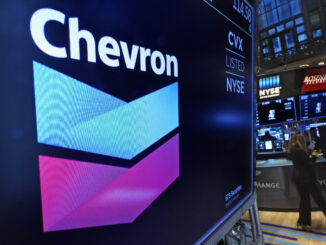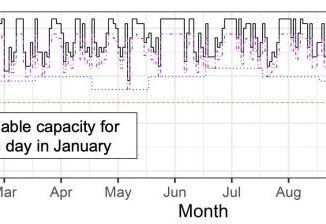
Dive Brief:
- A cumulative $12 trillion will be spent on clean energy in North America by 2050, but neither the U.S. or Canada are on track to meet their 2050 net zero emissions targets, says a new report from analysis and consulting firm DNV.
- Some of the biggest barriers to net zero in the U.S. include the lack of transmission buildout and continually increasing demand for electricity, said Cornelis Plet, who leads DNV’s power system advisory team.
- The U.S. should prioritize the procurement and installation of high-voltage direct current transmission, a more efficient transmission system than alternating current, as manufacturers have begun selling out of HVDC equipment through the 2030s, Plet said.
Dive Insight:
DNV said that since its last annual report, the U.S. and Canada have reduced their projected 2050 emissions by almost 20%, “a direct result of recent climate-related legislation” in both countries. But neither are projected to reach net zero emissions by then.
One aspect of the clean energy transition in which North America lags Europe is in transmission planning, said Plet: “European grid operators have put in mega orders for transmission equipment, specifically HVDC technology … and it so happens that these are also all European manufacturers, and those order books are full.”
“If we’re looking at current [offshore wind] plans in New York, they want systems in operation by 2030, 2031, but they haven’t yet started the solicitation for the transmission,” he said. “That places a lot of risk not just on developers, but also on state governments, to be able to meet their renewable targets.”
The departments of Energy and Interior last week released an action plan for offshore wind transmission off the Atlantic coast, setting goals for increasing partnerships and collaborations between stakeholders and reforming the interconnection queue.
The Federal Energy Regulatory Commission is also pursuing ongoing rulemakings regarding transmission planning, federal transmission authority and cost allocation.
Plet praised several of the Biden administration’s efforts on solving the transmission problem, including DOE’s construction loans and role as an anchor tenant for large transmission lines, as well as funding focused on speeding up the permitting processes and studies into HVDC systems.
However, he said, the task of transmission building is also made more difficult by “a regulatory framework which was designed in the ’70s, ’80s and ’90s – in a period when the transmission system was basically considered to be done.”
“The main goal during that time was to control costs and make sure that monopolies cannot abuse consumers and charge very high rates,” Plet said. “So a lot of the regulatory frameworks, which are ultimately the frameworks that are really driving what we can build, are aimed at controlling costs. And even though that has really worked out very well for that system, a lot of those regulatory frameworks are not suitable for the fundamental change that is now needing to happen.”
As a result, a shift is needed from a framework focused on incremental changes to one focused on long-term, forward-looking scenario planning, Plet said. “[Transmission] is the cheapest part. It’s the part that takes the longest. And it’s the part where the decisions get made about what actually gets spent when it comes to the big money. So don’t skimp on the planning.”
DNV’s report said that individual and community-level opposition to transmission buildout poses a threat to it, as well – residents are often opposed to transmission lines being sited near their homes, and state and federal governments have limited ability to leverage eminent domain.
“Nobody likes to have a transmission line in their background or running through a natural reserve, and a lot of those things can be avoided if we are simply more efficient with the way we use energy,” Plet said. “That doesn’t mean that we have to give up our lifestyles, but simply become more efficient. And I think this is probably something that is not mentioned often enough.”
While renewables generation will likely double or triple by 2050, he said, electricity demand is growing thanks to electric vehicle purchases and the electrification of buildings, and is likely to also double by then.
The Inflation Reduction Act produced many incentives for renewables generation, but “there is no investment tax credit for transmission,” Plet said.
In addition, transmission is “by its very nature hard to implement, because you’re not dealing with one location like a wind farm or solar farm, but you’re crossing many communities, many different kinds of landscapes, where you need to get right of way, you need to get consent, you need to get the approval of the different jurisdictions in these different areas,” he said.
Plet reiterated the importance of HVDC transmission for this reason, as HVDC lines can be more easily placed underground, and smaller cables can be used.
“Taking into account that the right of way is really the hardest part of building transmission today, the smaller you can make right of way, the better,” he said.



